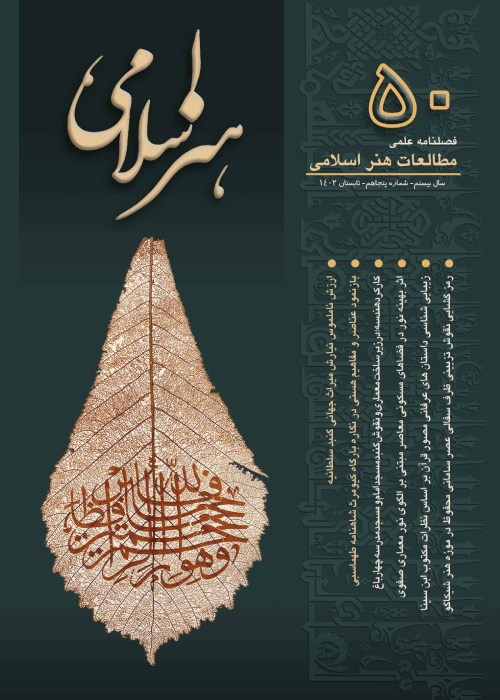Values and Tendencies of Islamic Philosophy on Safavid Residential Architecture; Case Study: Safavid New Jolfa Houses
Architecture, as a form of civilization, has always represented the deepest spiritual tendencies of a nation; such a notion is constantly deliberated upon when studying Islamic architecture. Traditional Islamic architecture is deeply intertwined with the epistemology and historical ontology of Muslims. The Safavid period is considered a unique period from a philosophical perspective; during this period, the dual tendencies of Islamic philosophy, that is, the peripatetic and Enlightenment tendencies, came together and appeared in Sadra's new philosophy. The formation of a new philosophical attitude and the transformation of the new Islamic worldview, in turn, had many effects on the integrity of civilization. Safavid architecture was also influenced by such inspirations and the reflection of the mentioned philosophical attitudes was apparent. In Descartes' philosophy, minor significance to space has led to the phenomenon that triggered the overlook of qualitative memories and ultimately reduces the foundation of a spiritual outlook in Western societies. In the residential architecture of the Safavid era, contrary to this view, we see the quality of space. A quality that unites all the elements of architecture in a single principle, that is, the display of human status in the spiritual world. It is this fundamental principle that places the Safavid house as a continuation of the mosque and a place for the emergence of meaning. In this study, we have endeavored to use the Safavid house as a critical tool to improve the condition of today's houses. In order to achieve this goal, a descriptive-analytical method has been used with the aid of a questionnaire in order to evaluate the attitude of the people of Isfahan towards Safavid and modern houses. The results of the present study indicates that the general attitude towards traditional Safavid houses is more positive and people prefer such houses to modern structures. The motive for such preference is the existence of the same spiritual elements that exists in Safavid residential houses.
Research objectives:
1. Identifying the effects of Islamic philosophy on Safavid residential architecture. 2. Improving modern residential structures with an outlook towards Safavid architecture.
Research questions:
1. What effects has Islamic philosophy had on Safavid residential architecture? 2. By assessing the target community, what are the differences between modern and Safavid residential architecture?
- حق عضویت دریافتی صرف حمایت از نشریات عضو و نگهداری، تکمیل و توسعه مگیران میشود.
- پرداخت حق اشتراک و دانلود مقالات اجازه بازنشر آن در سایر رسانههای چاپی و دیجیتال را به کاربر نمیدهد.


